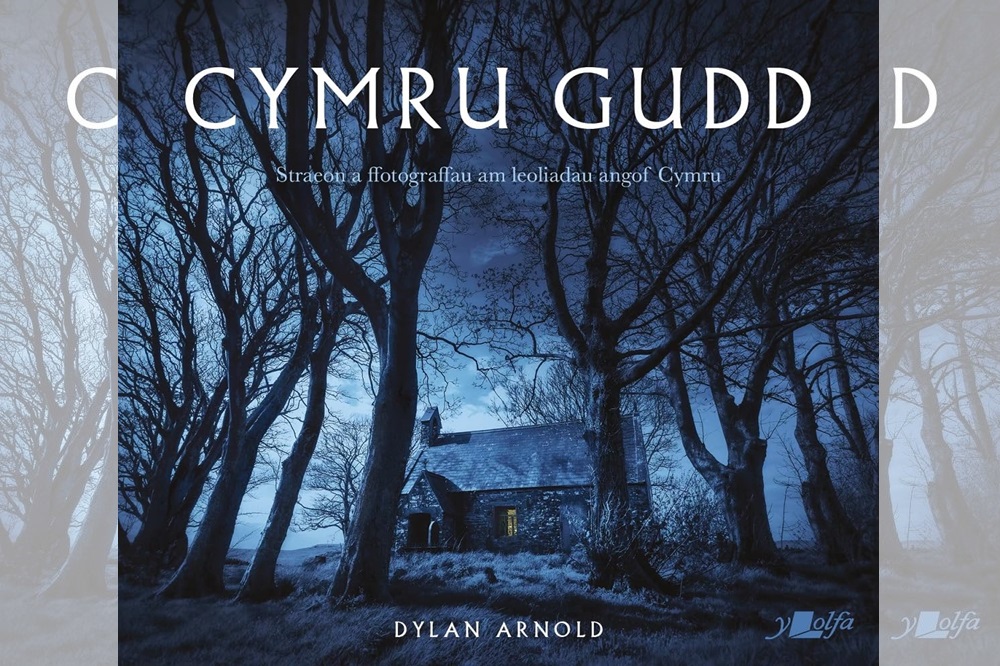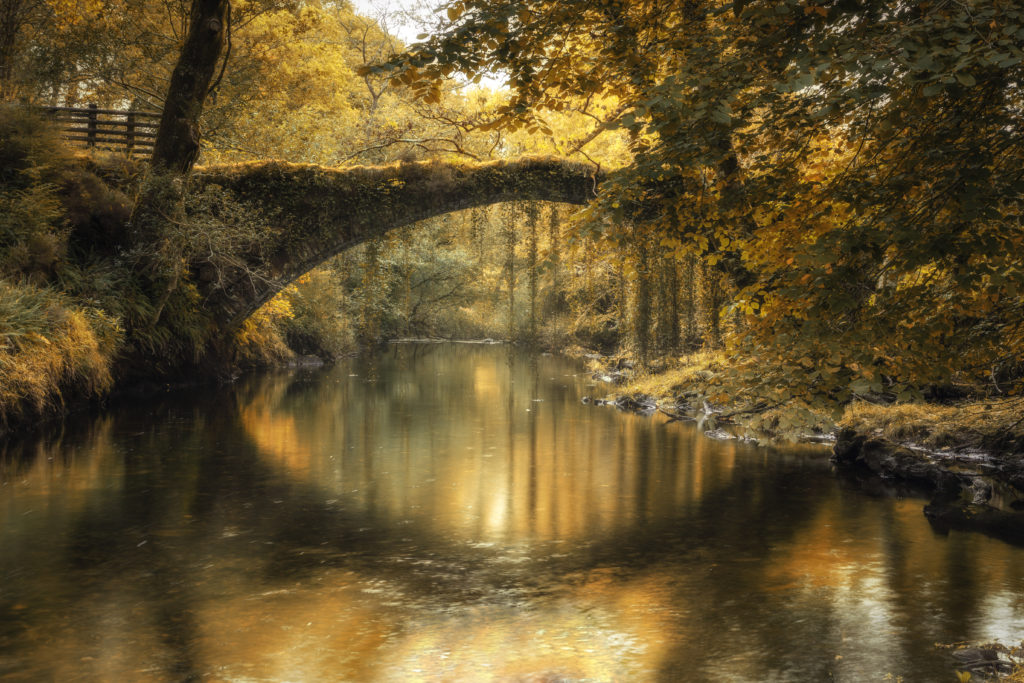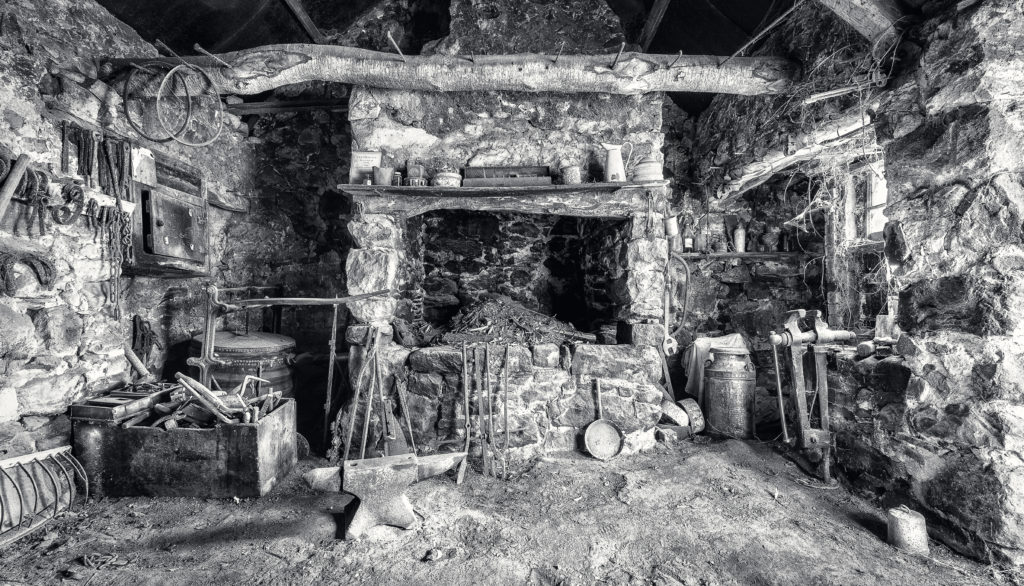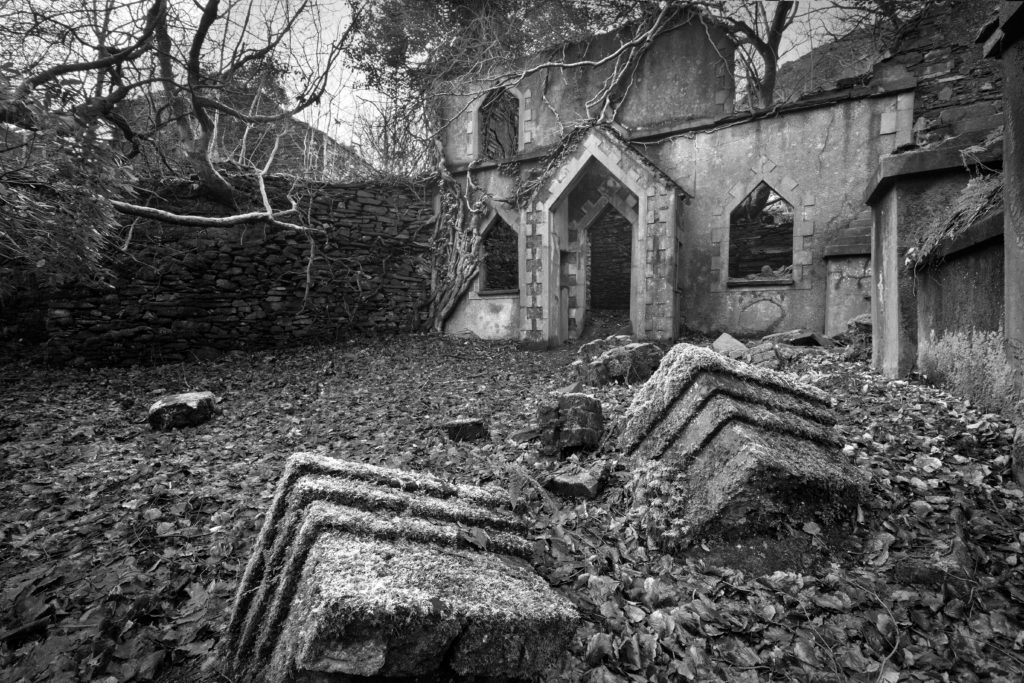Book review: Cymru Gudd by Dylan Arnold

Jon Gower
The photographer Dylan Arnold’s instinct is to take the road less travelled, always opting for the byway rather than the highway and sometimes going to places where there is no track at all.
So we have portraits of wind-blasted farm ruins, or dwelling places such as Tyn y Maes in Cwm Cywarch, set in hills so steep that the farmers would have to grasp clumps of rushes as they scrambled up the sheepfolds.
These are often empty and forlorn, but Arnold repopulates them by telling us about the people who used to live there and their hardscrabble lives, surviving snow-gripped winters and eking out an existence on poor soils.
In passing to show us how people used to communicate back then, often using white cloths to send countryside semaphore signals to neighbours and friends.
Nuclear bomb
It takes him to some very special places, sometimes hidden from sight, such as the underground storerooms for the UK’s stocks of deadly mustard gas near Mold.
Here, near the village of Rhyd-y-Mwyn, pioneering work on separating uranium isotopes stole the march on the U.S’s Manhattan project, which led to the making of the nuclear bomb.

Poets and shepherds
Contrastingly he shows us the mossy old bridge of Pont Felinrhyd near Maentwrog, set in woodlands which appear in the Mabinogi.
This was the site of a fatal, North v South battle between the dark wizard Gwydion – representing the royal line of Gwynedd – and Pryderi, the king of Dyfed.
We meet a fascinating cast of real characters too, not least one of the most unorthodox members of any chapel congregation, being Catherine Randall, known as Cadi Rondol, a notorious prostitute and fist fighter who attended Capel Mwd, Mud Chapel near the village of Penygraigwen in the north eastern corner of Ynys Môn.
There are poets and blacksmiths, preachers and shepherds too, all adding to a busy cast of people whose lives are her presented, often capturing an old way, or ways of life.

The unexpected
It’s the unexpectedness of some locations that really takes you by surprise. The highest lake in Wales, Ffynnon Llyffant in the Carneddau is the setting for a series of images of airplane wreckage in an area known as The Graveyard by members of the RAF’s Mountain Rescue Team as no fewer than twenty planes have crashed here since 1940.
A photograph of one of the propellors of a downed American Dakota aircraft is strikingly foregrounded against a dark sweep of Craig y Dulyn. Another shows a jet engine lying amongst the moor-grass.
Then there is Bryn Gwyn in Ysbyty Ifan, with its links with President Abraham Lincoln, which attracts American visitors to the hills of Hiraethog.
Lying at the heart of the book is an extraordinary tale, or set of tales as Arnold depicts the various inhabitants of a farm called Nyth Brân near Capel Curig in Eryri.
One of these was a former commando called Thomas Wawell Campion, a.k.a Whay, who settled there with rich heiress and former model, Dorothy Johns, whose only previous experience of the area was driving through the mountains in her father’s Bentley.
Despite the lack of electricity or running water she and her daughter Jane from a previous marriage happily settled into this remote spot in the mountains.
Love story
Whay and Dorothy’s story is one of love tainted by tragedy. Unable to have their own children, they adopt a young boy called Robert.
But a poisonous snitch in the village informs the authorities of Whay’s medical history, mentioning the TB he forgot to detail during the adoption process and, abjectly, denied the right to keep him as their own, they have to take the lad back to the orphanage.
Dorothy later turned an account of life at Nyth Bran into a successful book, 1000 Feet Up, which fair flew off the bookshop shelves and led to more titles in their turn.

Haunting
Many of the images within the book’s pages are haunting: a garden run to briars; a fireplace choked with many years’ worth of crows nests fallen down a chimney, a disused chapel where the winds have whipped away the roof.
Some of these photographs are Arnold’s own work but he has cleverly mixed them with family snaps and heirloom documents, showing us the often substantial families that lived in some of the very humble dwellings, from which the children marched the many miles to school, the evenings given to songs and storytelling.
So he gives us not only images but living, breathing social history, not least when he accompanies people on their return journeys to a home they haven’t seen for years.
Cymru Gudd is a lovely, absorbing and illuminating book, shot through with the author’s love of the land and a quiet, demonstrable respect for its people. A gently transporting read.
Cymru Gudd: Straeon a ffotograffau am leoliadau angof Cymru is published by Y Lolfa and is available from all good bookshops.
Support our Nation today
For the price of a cup of coffee a month you can help us create an independent, not-for-profit, national news service for the people of Wales, by the people of Wales.




